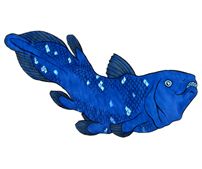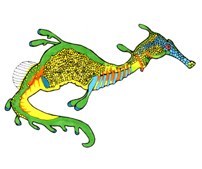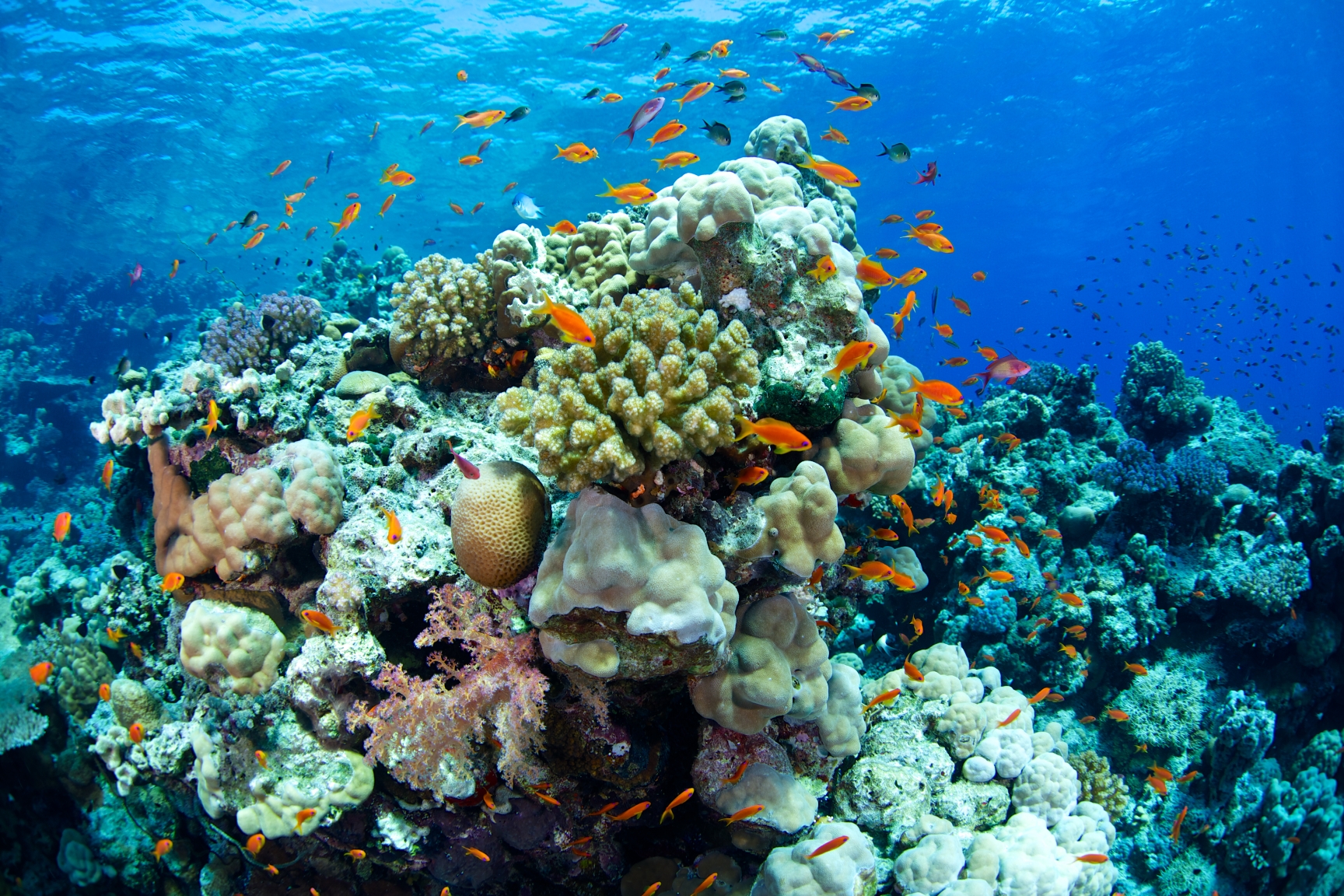Fish Files in your Backyard
Coelacanth (Latimeria chalumnae)

Where do I Live?
I am found in very small groups in the western part of the Indian Ocean, along the southeastern coast of Africa, around the Comoros Islands and Madagascar
What do I look like?
I can grow quite large, up to 2 meters in body length. I have stubby, fleshy fins and am vivid blue in colour, with the occasional lightly coloured patch.
What do I eat?
I eat smaller fish and squid.
What is unique about me?
Scientists used to believe that I had gone extinct millions of years ago. Then one day a fisherman caught me off the coast of South Africa in 1938. Since I have no closely related living species and have changed very little from known fossils of my ancient ancestors millions of years ago, I am known as a “living fossil”.
How common am I?
I am critically endangered. Scientists believe there are only about 500 of me found throughout the entire Indian Ocean.
Weedy Seadragon (Phyllopteryx taeniolatus)

Where do I Live?
My favorite place to live is in water about 3 to 50 meters deep off the southern coast of Australia. I can usually be found between Port Stephens, New South Wales and Geraldton, Western Australia. Tasmania is another place you can find me.
What do I look like?
My name says it all! I look just like a weed. The weed-like projections of my body are extremely useful in camouflaging me in the seaweed beds in which I usually live. I am primarily yellow in colour with patches of red and blue accents. I can grow up to 45 cm in length.
What do I eat?
When I’m hungry I stick my long snout into crevices in the reef to go hunting for food. One of my favorite things to eat is tiny crustaceans. I also enjoy zooplankton if I can get my nose on it.
What is unique about me?
As a male weedy seadragon, I carry the eggs of my offspring. This is unlike many species in which the female carries the eggs. The only other species that share this trait with me are seahorses and pipefish.
How common am I?
I am only found in a small area south of Australia and am classified as near threatened.
